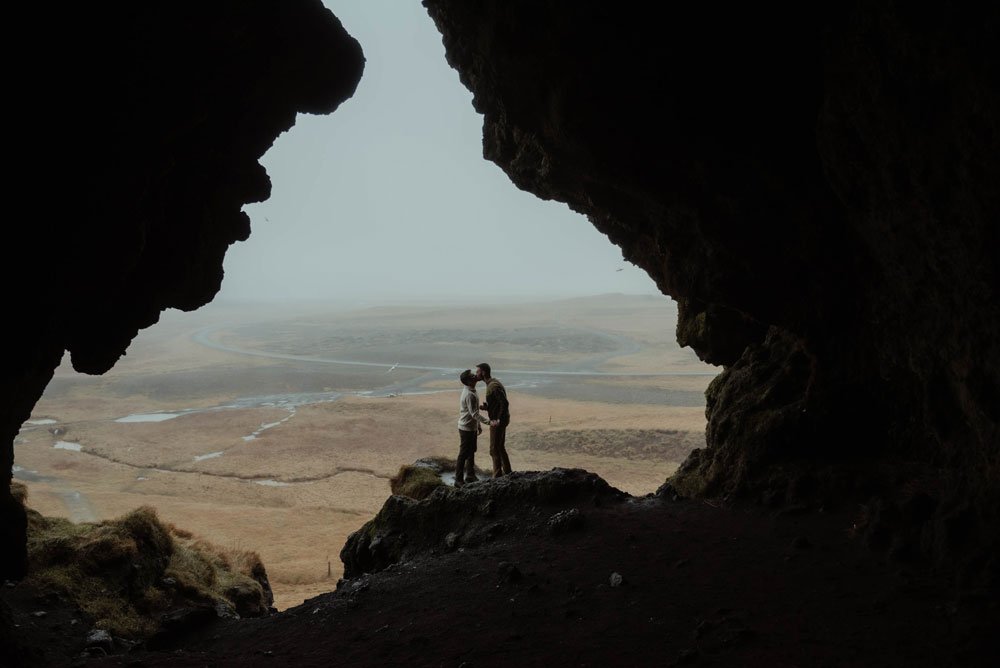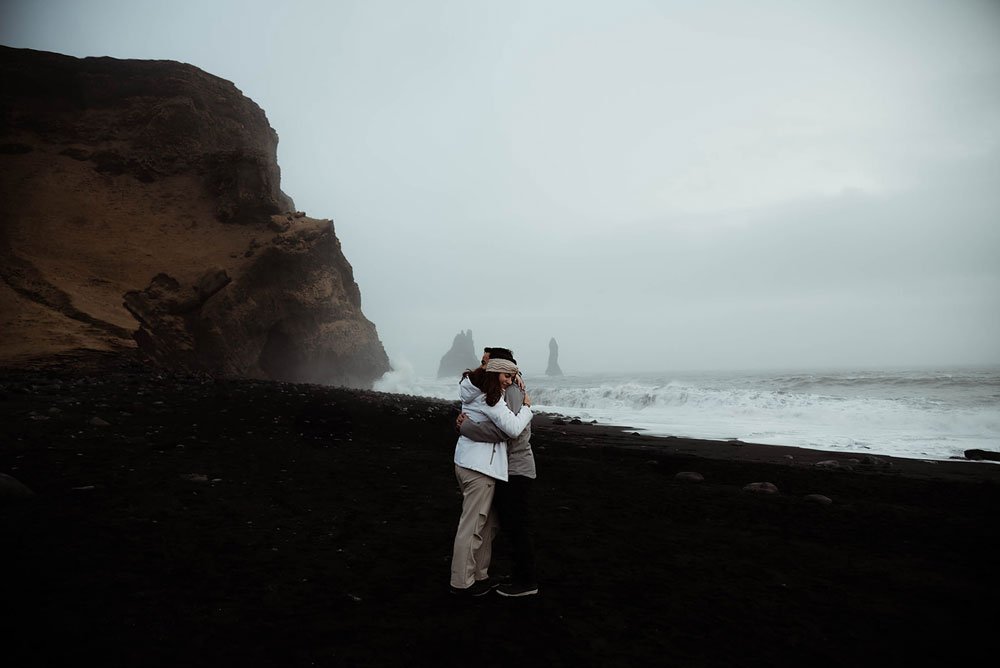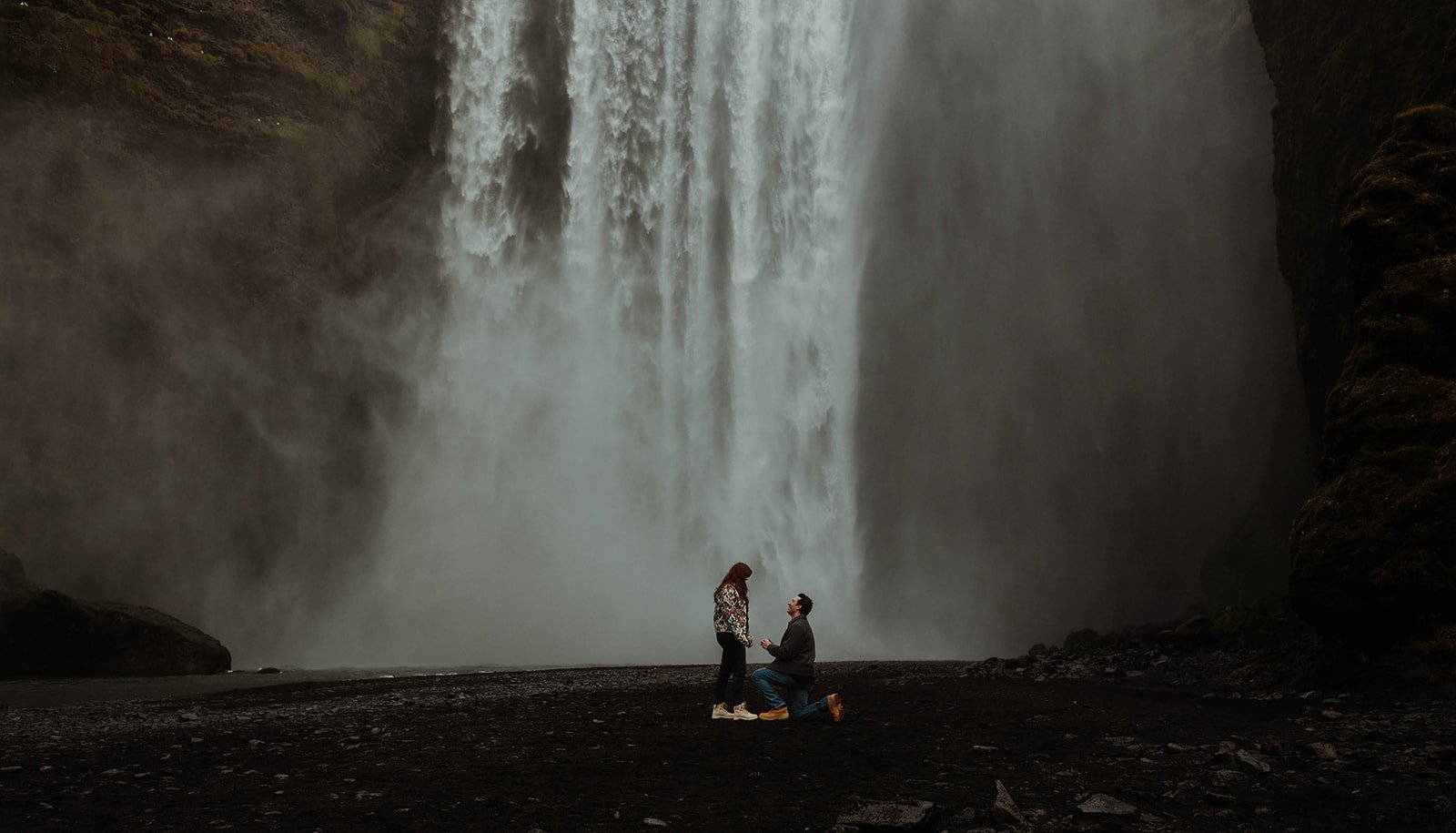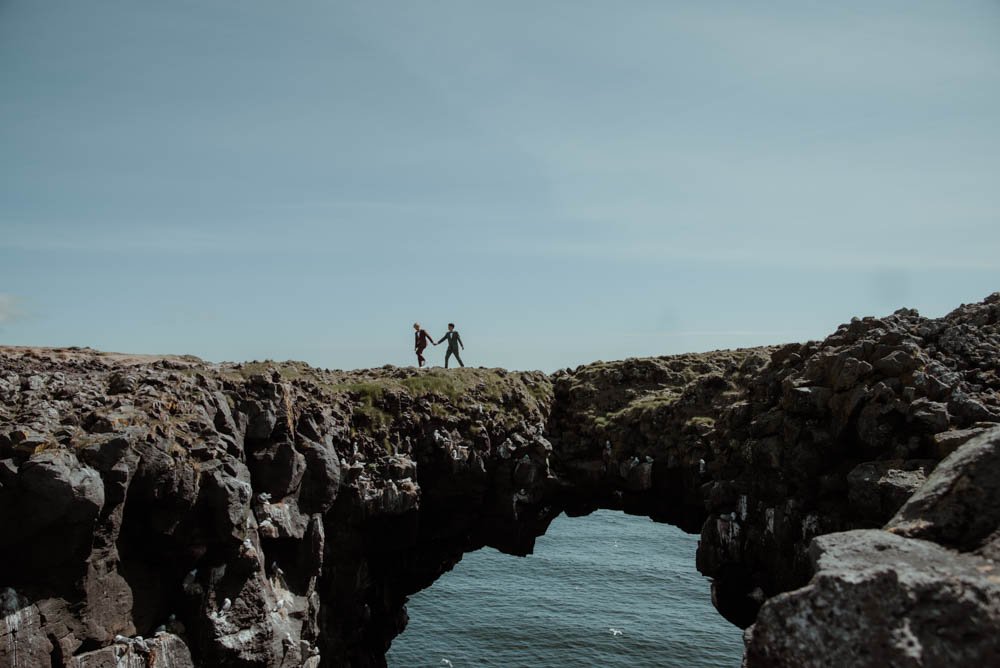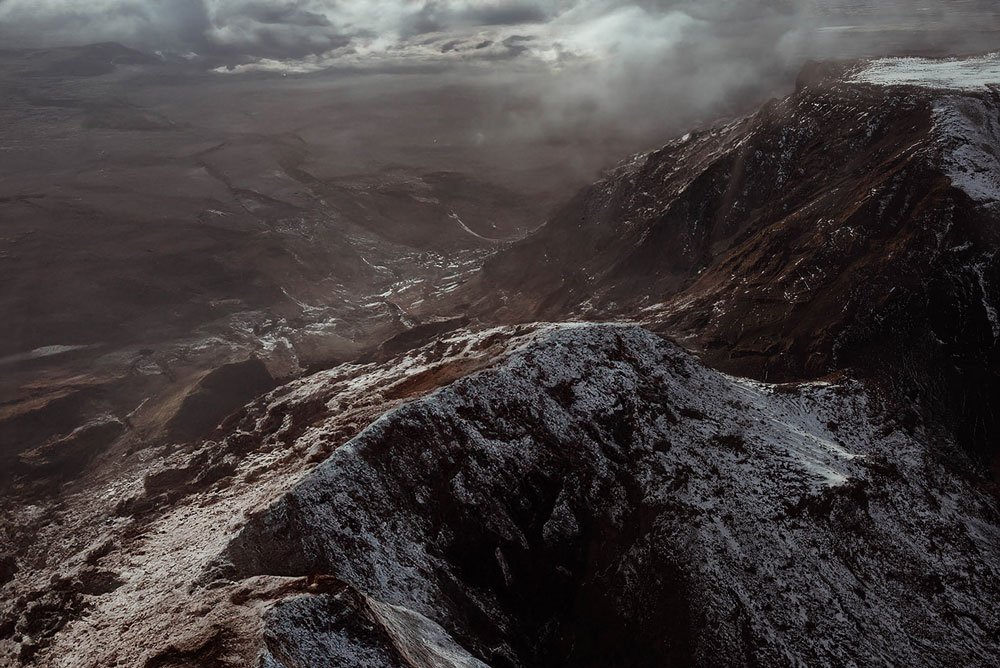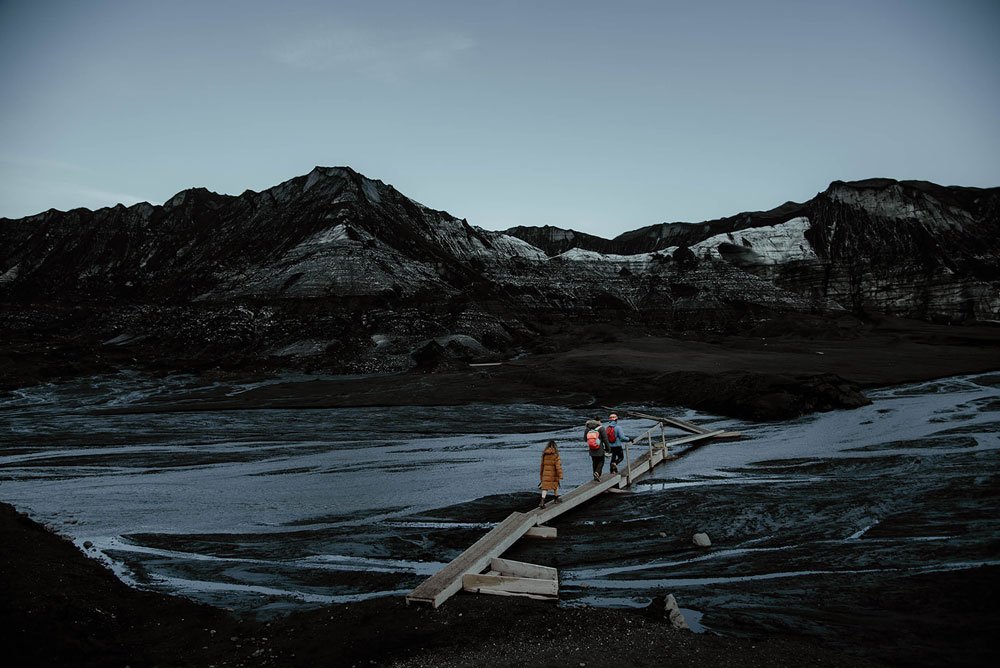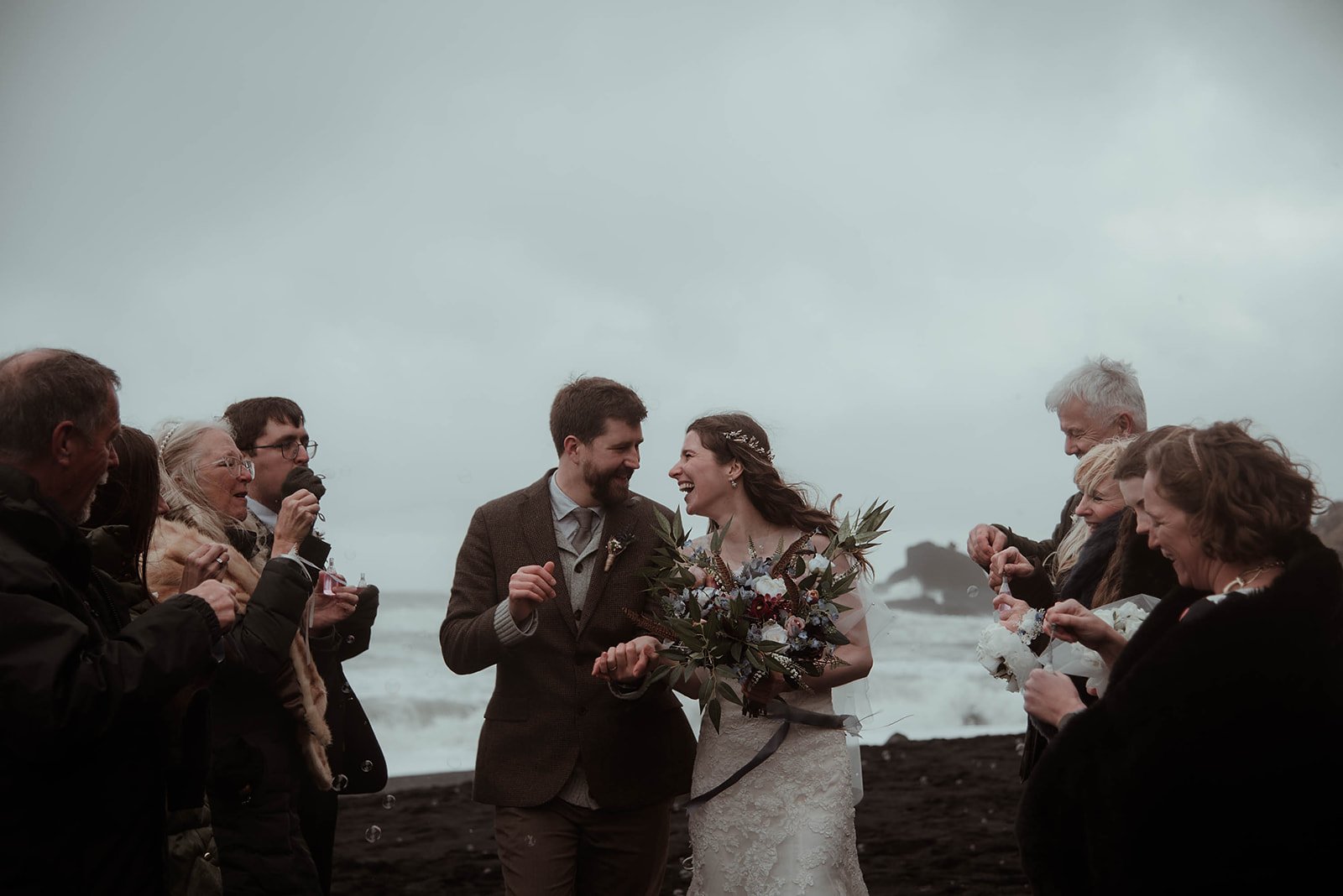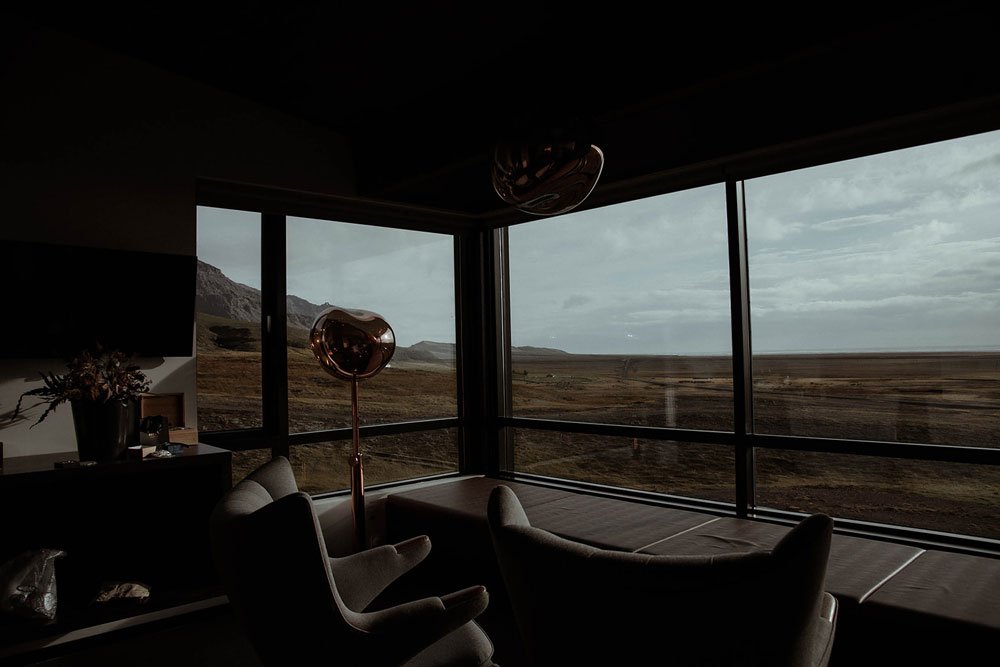10 big Mistakes Couples Make While Having a Destination Elopement.
In recent years, the traditional concept of weddings has undergone a significant transformation. Couples are steering away from conventional ceremonies and embracing a more intimate and adventurous approach to tying the knot. One such trend that has captured the hearts of many is the rise of destination elopements. In this blog post, let's explore the definition of destination elopements, understand why they are gaining popularity, and delve into the importance of avoiding common mistakes for a truly memorable experience.
In this 10 big mistakes couples make while having a destination elopement, there are the following chapters:
Why destination elopements are gaining it’s popularity
Mistake 1: Inviting guests that are not up to the weather
Mistake 2: Rushing from a picture location to a picture location
Mistake 3: Checking in your wedding dress or suit at the airport
Mistake 4: Not planning for travel delays
Mistake 5: Making the planning all alone
Mistake 6: Choosing the wrong season for the destination elopement
Mistake 7: Not accounting for cultural sensitivities
Mistake 8: Necleting permits
Mistake 9: Not preparing for the physical demands
Mistake 10: Not setting aside alone time
Why Destination Elopements Are Gaining Popularity:
Intimacy Over Extravagance: Destination elopements allow couples to exchange vows in a secluded and picturesque setting, creating an intimate atmosphere that fosters genuine connections and shared moments.
Adventure and Romance: The allure of adventure and romance draws couples to destination elopements. Whether it's a mountaintop, a beach, or a charming foreign city, the chosen destination becomes an integral part of the love story.
Cost-Effective Alternatives: Many couples find destination elopements to be more budget-friendly compared to traditional weddings. The smaller guest list and simplified arrangements often result in significant cost savings.
Personalized Experience: Destination elopements offer the freedom to tailor every aspect of the ceremony to reflect the couple's personalities and preferences, creating a truly unique and memorable experience.
10 big mistakes couples make while planning a destination elopement:
Inviting guests that are not up to the destination weather.
When it comes to destination elopements, the allure lies not only in the intimate union of two souls but also in the breathtaking backdrop that nature provides. However, one common pitfall that can cast a cloud over the celebration is inviting guests who are unprepared for the destination's weather. In this blog post, let's explore the importance of setting realistic expectations, providing comprehensive weather information, offering suggestions for appropriate attire, and encouraging guests to plan accordingly.Setting Realistic Expectations for Guests
Creating the Right Atmosphere: Destination elopements often take place in settings that vary drastically from the familiar surroundings of home. To ensure that your guests are prepared for the climate, it's crucial to set realistic expectations from the beginning. Clearly communicate the overall vibe of the destination and any specific weather conditions they might encounter.
Communication is Key: Whether it's the balmy beaches of the tropics or the crisp air of a mountain retreat, transparent communication about the anticipated weather will help guests pack appropriately. Let them know if they should expect sunshine, rain, or cooler temperatures, so they can plan and pack accordingly.
Incorporating Destination Vibes: Encourage guests to embrace the destination's unique atmosphere. If it's a beach elopement, let them know they can ditch the formal wear for light, airy clothing. Similarly, if it's a colder climate, suggest cozy layers and accessories. This not only ensures comfort but also adds to the overall aesthetic of the celebration.
Providing Comprehensive Weather Information for the Destination
Weather Updates Leading Up to the Event: Keep your guests in the loop by providing regular weather updates leading up to the big day. This can be done through a dedicated wedding website, group emails, or even a social media group. By staying informed, guests can make last-minute adjustments to their packing.
Seasonal Considerations: If your destination elopement spans different seasons, make sure to highlight the changes in weather that may occur. Guests might need to pack both sunscreen and umbrellas, so being prepared for any scenario ensures everyone is equipped for a comfortable experience.
Local Expertise: Leverage the expertise of locals or venue staff who are familiar with the destination's weather patterns. They can provide valuable insights and tips that go beyond what standard weather apps might offer. Include their advice in your communications to give guests a more comprehensive understanding.
Offering Suggestions for Appropriate Attire
Style Meets Practicality: Help your guests strike the perfect balance between style and practicality when it comes to their attire. For warm destinations, suggest breathable fabrics and attire suitable for the beach or outdoor settings. In cooler climates, advise on layering options that can be adjusted throughout the day.
Footwear Considerations: Footwear often gets overlooked, but it's a crucial aspect of weather preparation. If your elopement involves walking on sand, grass, or rocky terrain, recommend appropriate shoes. Conversely, for formal indoor venues, let guests know if heels or dress shoes are the best choice.
Providing Inspiration: Consider providing visual inspiration for the recommended attire. Share mood boards or examples of clothing that align with the destination's vibe. This not only helps guests understand the dress code but also adds an element of excitement as they curate their outfits.
Encouraging Guests to Plan Accordingly
Early Planning Pays Off: Encourage guests to start planning their wardrobe well in advance. Waiting until the last minute may lead to oversights and unnecessary stress. Early planning allows them to purchase any needed items and make adjustments based on the evolving weather forecast.
Sharing Resources: Offer resources such as packing checklists and travel guides that specifically address the destination's weather. These resources can serve as valuable references, especially for guests who may not be familiar with the climate or unique aspects of the location.
2. Rushing from a location to a location.
Embarking on the journey of a destination elopement is a romantic adventure that promises intimate moments and breathtaking backdrops. However, one of the common pitfalls that can detract from the magic is rushing from location to location on your elopement day. In this blog post, we'll explore the importance of a well-planned timeline, scheduling ample time for each location, building in buffer time for unforeseen delays, and offering tips for creating a stress-free elopement day itinerary.
Importance of a Well-Planned Timeline
Setting the Stage for Success: A well-planned timeline is the backbone of a smooth and enjoyable elopement day. It ensures that every moment is savoured, and there's ample time to create cherished memories. Think of it as a carefully crafted script that allows you and your partner to be present and fully immersed in the experience.
Avoiding Unnecessary Stress: A rushed timeline can lead to stress and anxiety, taking away from the joyous nature of the day. By planning ahead and allocating time thoughtfully, you set the stage for a relaxed and memorable celebration, allowing you to focus on the love you're there to celebrate.
Balancing Spontaneity and Structure: While spontaneity can add charm to your elopement day, a balance with a structured timeline is essential. It ensures that key moments are given the attention they deserve while leaving room for unexpected delights that may unfold naturally.
Scheduling Ample Time for Each Location
Quality Over Quantity: Choosing multiple locations for your elopement can add depth and variety to your celebration. However, it's crucial to prioritize quality over quantity. Rather than rushing through multiple spots, allocate enough time at each location to fully embrace the atmosphere and capture meaningful moments.
Considering Travel Time: Factor in travel time between locations when creating your itinerary. Whether it's a scenic drive, a boat ride, or a hike, accounting for the time it takes to move from one place to another ensures a seamless transition and reduces the risk of feeling rushed.
Reflecting on Significance: Each chosen location likely holds sentimental value. Whether it's where you first met, shared a special moment, or simply a place that resonates with your love story, giving these locations the time they deserve allows you to reflect on the significance of each spot.
Building in Buffer Time for Unforeseen Delays
The Unpredictability of the Outdoors: Nature, with all its beauty, can be unpredictable. Weather changes, unexpected obstacles, or even a spontaneous photo opportunity can add time to your schedule. Building in buffer time ensures that you can adapt to these unforeseen delays without compromising your overall plan.
Creating a Stress-Resistant Schedule: Buffer time acts as a safety net, providing a stress-resistant schedule that accommodates delays without causing panic. This flexibility allows you to navigate the day with ease, knowing that you have a cushion to absorb any unexpected moments.
Accounting for Logistics: In addition to outdoor variables, consider logistical factors that might contribute to delays. Whether it's transportation hiccups, technical difficulties, or the need for a brief rest, having buffer time built into your itinerary ensures that you remain in control of the day's pace.
Tips for Creating a Stress-Free Elopement Day Itinerary
Begin Early: Start your day with a relaxed and unhurried morning. Beginning early allows for a gradual start, ensuring that you're not rushed from the very beginning. This sets a positive tone for the entire day.
Collaborate with Your Photographer: Communication with your photographer is key. Discuss your vision for the day, including the locations you want to visit and the type of shots you desire. Collaborating with your photographer helps in creating a realistic and achievable itinerary.
Include Breaks for Refreshment: Elopement days can be physically and emotionally intense. Incorporate breaks in your schedule for refreshments, whether it's a quiet moment with your partner or a light meal. Staying nourished and hydrated contributes to a stress-free atmosphere.
3. Checking your wedding dress or suit at the airport.
Embarking on the adventure of a destination elopement is a thrilling experience, but one crucial aspect that can add stress to your journey is the transportation of your wedding attire. In this blog post, we'll explore the risks and potential issues of checking in wedding attire, present alternatives to transporting wedding outfits, provide tips for packing and transporting them safely, and guide you on ensuring that your dress or suit arrives in perfect condition.
Risks and Potential Issues of Checking in Wedding Attire
Vulnerability to Damage: Checking in your wedding attire with your luggage exposes it to various risks. From rough handling to potential mishaps in the cargo hold, the delicate fabrics and intricate details of wedding dresses and suits may be susceptible to damage during the journey.
Lost Luggage Woes: The nightmare scenario of lost luggage is another risk when checking in your wedding attire. The stress of arriving at your destination only to find that your precious garments are nowhere to be found can cast a shadow over what should be a joyous occasion.
Limited Control and Visibility: Once your attire is checked in, you have limited control and visibility over its condition during the journey. Any unforeseen issues may only be discovered upon arrival, leaving you with limited time to address potential damages.
Alternatives to Transporting Wedding Attire
Carry it On: Opting to carry your wedding attire onto the plane is one of the safest alternatives. By keeping it with you in the cabin, you minimize the risk of damage and loss. Many airlines understand the delicate nature of wedding garments and may offer special accommodations.
Tips for Packing and Transporting Wedding Outfits Safely
Use a Garment Bag: Whether you're carrying your attire on the plane or using an alternative method, a high-quality garment bag is a must. It provides an extra layer of protection against dust, dirt, and potential snags.
Secure Delicate Embellishments: If your wedding attire has delicate embellishments, secure them properly to avoid damage. Consider wrapping beaded sections in tissue paper or placing a layer of fabric between intricate lace to prevent snagging.
Choose Wrinkle-Resistant Fabrics: Opt for fabrics that are less prone to wrinkles, especially if you'll be packing your attire tightly. Fabrics like chiffon and jersey are known for their wrinkle-resistant properties, ensuring your dress or suit looks pristine upon arrival.
Pack Thoughtfully: When packing your wedding attire, do so with care. Lay it flat or fold it gently, avoiding unnecessary creases. If your outfit is particularly voluminous, consider rolling it instead of folding it to minimize the risk of deep wrinkles.
Ensuring the Dress or Suit Arrives in Perfect Condition
Inspect Upon Arrival: As soon as you arrive at your destination, inspect your wedding attire. Unpack it carefully and check for any signs of damage or wrinkles. The sooner you identify potential issues, the more time you'll have to address them.
Have a Professional Pressing: If your dress or suit has developed wrinkles during transit, consider having it professionally pressed upon arrival. Many destination wedding locations have local services that specialize in garment care.
4. Not planning for travel delays.
Embarking on a destination elopement is an exciting journey filled with love, adventure, and the promise of unforgettable moments. However, one often overlooked aspect that can add unwanted stress to your celebration is not planning for travel delays. In this blog post, we'll explore the importance of acknowledging the possibility of travel disruptions, creating contingency plans for flight delays or cancellations, choosing a destination with good transportation infrastructure, and utilizing travel insurance for added protection.
Acknowledging the Possibility of Travel Disruptions
The Unpredictable Nature of Travel: No matter how meticulously you plan, travel inherently comes with its uncertainties. Flights can be delayed, connections missed, or unexpected events may arise. Acknowledging the possibility of travel disruptions is the first step towards a stress-free elopement.
Weather, Technical Issues, and More: Factors such as adverse weather conditions, technical issues, or even air traffic congestion can lead to delays. While these circumstances are beyond your control, preparing for them allows you to navigate any disruptions with ease and grace.
Managing Expectations: By recognizing that travel delays are a possibility, you can manage your expectations and those of your guests. Setting a tone of flexibility and understanding creates a resilient foundation for your elopement journey.
Creating Contingency Plans for Flight Delays or Cancellations
Flexible Itinerary Design: When planning your elopement itinerary, incorporate flexibility to accommodate potential travel delays. Avoid scheduling critical events immediately upon arrival, giving yourself and your guests the buffer needed to adjust to any unforeseen changes.
Communication is Key: Create open lines of communication with your vendors, guests, and anyone involved in your elopement. Inform them of your travel plans and let them know that you've accounted for potential delays. This transparency ensures that everyone is on the same page and can adapt if needed.
Have a Plan B: Consider having a backup plan for key elements of your elopement, such as the ceremony location or reception venue. This ensures that even if travel delays impact your original arrangements, you have a seamless and equally magical alternative ready.
Choosing a Destination with Good Transportation Infrastructure
Research Transportation Options: Before finalizing your destination, thoroughly research the transportation infrastructure. Consider the availability and reliability of flights, the efficiency of local transportation services, and the accessibility of key locations for your elopement.
Proximity to Major Hubs: Opting for a destination with proximity to major transportation hubs can mitigate the impact of travel delays. Well-connected destinations provide more flexibility in rescheduling flights and have a higher likelihood of alternative transportation options.
Local Transportation Services: Explore the local transportation services available at your chosen destination. Reliable and efficient local transport can be a saving grace in case of travel delays, allowing you to easily navigate the area and reach your elopement venues.
Utilizing Travel Insurance for Added Protection
Comprehensive Coverage: Investing in travel insurance is a smart move for any destination elopement. Look for policies that offer comprehensive coverage for trip cancellations, delays, and interruptions. This provides a financial safety net in case your travel plans are impacted.
Read the Fine Print: Before purchasing travel insurance, carefully read the policy details. Ensure that it covers the specific needs of your elopement, including any potential travel delays or cancellations related to your wedding date.
5. Planning an elopement abroad alone and to an unfamiliar country.
Embarking on the path of eloping abroad to an unfamiliar country is a bold and adventurous choice. While the idea of exchanging vows in a distant and exotic location is undoubtedly romantic, planning such an intimate celebration requires careful consideration. In this blog post, let's explore the key aspects of planning an elopement abroad alone, ensuring a seamless and magical experience. We'll delve into the importance of researching and selecting a destination wisely, hiring local vendors with experience in destination weddings, utilizing destination wedding planners for guidance, and understanding local laws and requirements for marriage ceremonies.
Researching and Selecting a Destination Wisely
Reflecting on Your Vision: Begin your journey by reflecting on your vision for the elopement. Are you drawn to the serene beaches of Bali, the majestic landscapes of Iceland, or the historical charm of a European city? Understanding your preferences and the atmosphere you desire will guide you in selecting the perfect destination.
Consider Logistics and Accessibility: While a destination may be visually stunning, consider the practicalities of getting there. Assess the accessibility of the location, flight options, and any potential visa requirements. Choosing a destination with straightforward logistics contributes to a smoother planning process.
Weather Considerations: Research the climate and weather patterns of your chosen destination during the time of your elopement. This knowledge allows you to plan accordingly, ensuring your comfort and the success of outdoor events.
Hiring Local Vendors with Experience in Destination Weddings
Cultivating Local Expertise: When planning an elopement in an unfamiliar country, local expertise is invaluable. Seek out local vendors who specialize in destination weddings. These professionals possess a deep understanding of the area, culture, and logistical intricacies, enhancing the overall experience.
Researching and Verifying: Conduct thorough research on potential vendors, reviewing their portfolios, client testimonials, and any destination-specific expertise they may offer. Verify their experience with destination weddings to ensure they are well-equipped to handle the unique challenges that may arise.
Communication is Key: Establish clear lines of communication with your chosen vendors. Utilize video calls, emails, and other communication tools to discuss your vision, preferences, and any specific requirements. A strong and open dialogue with your vendors fosters a collaborative and successful partnership.
Personalizing the Experience: Work closely with your destination wedding planner to personalize your elopement experience. Share your vision, preferences, and any cultural elements you'd like to incorporate. A skilled planner will weave these elements seamlessly into the fabric of your celebration.
Learning About Local Laws and Requirements for Marriage Ceremonies
Legal Formalities: Each country has its own set of legal requirements for marriage ceremonies. Research and understand these formalities well in advance. This may include obtaining a marriage license, adhering to residency requirements, and completing specific documentation.
Consulting Local Authorities: Reach out to local authorities or relevant government offices to gather accurate and up-to-date information on the legal process. This step ensures that you comply with all necessary regulations, preventing any unexpected obstacles on your elopement day.
Translator Services if Needed: In some cases, language barriers may exist when dealing with legal documentation. If necessary, consider hiring a translator or utilizing translation services to ensure clear communication and understanding of the legal requirements.
6.) Choosing the Wrong Season for the Destination
Planning a destination elopement without considering the seasonal challenges of your chosen location can lead to unexpected hurdles. Weather, local tourism peaks, and seasonal attractions can either enhance or hinder your special day.
Seasonal changes can also impact the aesthetics of your location. These seasonal differences significantly influence the mood and tone of your elopement photos and the overall experience. Choosing the wrong season may mean missing out on your desired scenery or contending with crowds during peak tourist times.
Aligning the Season with Your Vision
The key to avoiding seasonal pitfalls is thorough research and strategic planning. Start by defining your elopement vision—what does your ideal day look like? If you imagine exchanging vows under a canopy of golden leaves, autumn is your best bet. If you dream of standing beside a cascading waterfall, ensure your destination’s water levels are at their peak during your chosen season.
Speak with local experts, including photographers, guides, and planners. They can provide invaluable insight into the best seasons for specific locations, as well as tips for managing weather conditions.
Flexibility is another crucial component of planning. If weather conditions are less predictable, such as in Iceland or Scotland, consider booking a backup date or planning a multi-day trip to increase your chances of favourable weather. Incorporate weather-resistant elements into your plans, such as layering your outfit or choosing a dress with a fabric that won't be ruined by rain or snow.
Additionally, embrace the unique beauty of each season. While winter storms may seem daunting, they can create magical, ethereal moments when approached with the right mindset and preparation. Similarly, unexpected rain showers in tropical destinations can result in lush, vibrant landscapes that add depth and drama to your photos.
Finally, don’t forget to consider your guests, if you’re including any. Ensure they’re informed about the weather and climate they can expect and provide suggestions for what to pack. If your chosen season poses challenges for travel or comfort, such as extreme cold or humidity, prioritize clear communication and thoughtful preparation to make the experience enjoyable for everyone involved.
7.) Not Accounting for Cultural Sensitivities
When planning a destination elopement, couples often focus on logistics, breathtaking locations, and creating an unforgettable experience. However, overlooking the cultural norms and sensitivities of your chosen destination can lead to unintentional disrespect or offence, casting a shadow over your special day. This mistake is more common than you might think and can stem from a lack of understanding or simple oversight.
For example, some destinations have strict dress codes, particularly at religious or sacred sites. In Bali, temples often require visitors to wear sarongs, while in Morocco, modest attire is appreciated, especially in rural areas. Couples choosing these locations for elopements might inadvertently offend by wearing revealing wedding outfits or ignoring local attire requirements.
Cultural insensitivity can extend beyond the ceremony itself. Activities like posing for photos in restricted areas, climbing on ancient ruins, or using props that carry unintended connotations can easily be interpreted as disrespectful. For instance, standing on Iceland's moss-covered lava fields for a photo may seem harmless, but it damages delicate ecosystems that take centuries to recover.
Failing to account for cultural sensitivities not only risks offending locals but also diminishes the authenticity of your experience. It may create tension with community members and leave you with a sense of regret for not fully honouring the place where you chose to celebrate such an important moment.
Respecting and Embracing Local Culture
Understanding and respecting local culture is essential for creating a meaningful and harmonious destination elopement experience. Start by immersing yourself in the traditions, customs, and expectations of the place you plan to elope. Research the cultural nuances, and if possible, seek advice from locals or professionals who are well-versed in the area’s etiquette and values.
One of the simplest ways to demonstrate cultural respect is through attire. If your elopement involves visiting sacred or culturally significant sites, adapt your wedding outfit to align with local norms. For example, consider incorporating modesty into your dress or suit if you're eloping in a destination with conservative expectations. Accessories like shawls or wraps can provide versatility while respecting the cultural context.
Incorporate elements of local tradition into your ceremony. This not only honors the culture but also enriches your experience with unique and memorable moments. Whether it's including a blessing from a local elder, using regional flowers for your bouquet, or partaking in a traditional ceremony, these gestures showcase your appreciation for the destination and its people.
Additionally, educate your guests, if applicable, about the local customs. Provide them with information on proper etiquette, dress codes, and behaviours to ensure that everyone involved in your elopement respects the culture. This can be done through a pre-travel guide or an informal discussion before the ceremony.
When planning your activities, be mindful of the cultural and environmental impact of your choices. Avoid disrupting sacred sites or engaging in behaviours that could harm the local community or ecosystem. Work with ethical tour operators and vendors who prioritize sustainable and respectful practices. For example, in Iceland, ensure your elopement plans comply with the "Leave No Trace" principles, which aim to protect the natural beauty of the landscape.
Instead of seeing cultural differences as challenges, view them as opportunities to deepen your connection with the place and its people. Respectful engagement with local culture enriches your elopement experience, leaving you with a profound appreciation for the unique setting you’ve chosen to celebrate your love.
8.)Neglecting Permits for Elopement Spots
In the excitement of planning, it’s easy to overlook a critical detail: permits. Neglecting to obtain necessary permits for your chosen elopement spot can result in serious complications on your wedding day, including fines, being asked to leave, or even having your plans disrupted entirely.
Permits are often required for a variety of reasons:
Managing visitor capacity
Protecting the environment
Ensuring the safety of everyone using the space.
Skipping the permit process may seem like a way to save time or money, but it often results in added stress and disappointment. Imagine arriving at your dream location, only to discover that another group has reserved the space, or worse, being asked to leave because you lack the proper paperwork. Beyond logistical issues, neglecting permits can harm the environment and strain relationships with local communities. Many permits fund conservation efforts, so skipping them undermines the resources needed to maintain the beauty of these natural spaces.
Secure Permits Early for a Stress-Free Day
The good news is that navigating the permit process is straightforward when approached early and with proper planning. By securing the necessary permissions for your elopement location, you can ensure a smooth, worry-free experience that aligns with both local regulations and your vision for the day.
The first step is to research the requirements for your chosen location. Start by visiting the official website of the park, beach, or natural area where you plan to elope. Many sites provide detailed information about special use permits, photography permits, and restrictions. Pay attention to deadlines, as some permits require applications to be submitted weeks or even months in advance.
If you’re unsure about the specifics or find the process overwhelming, enlist the help of local vendors. Elopement photographers, planners, and officiants who are familiar with the area can often guide you through the permitting process or handle it on your behalf. Their expertise can be invaluable, particularly in international locations where language barriers or unfamiliar regulations might complicate matters.
When applying for permits, be thorough in providing details about your plans. This includes the number of people in your party, the duration of your ceremony, and any additional activities, such as photography or videography. Honesty ensures that you receive the appropriate permissions and avoids potential issues on the day of your elopement.
It’s also wise to budget for permit fees. While these costs vary by location, they are typically a small price to pay for peace of mind and the ability to enjoy your day without interruptions. Additionally, remember that many permits contribute to the preservation and maintenance of these beautiful spots, so your investment helps protect the environment for future visitors.
Once your permit is approved, keep a copy with you on your elopement day. This allows you to present it to park officials or rangers if needed, ensuring that you can proceed with your ceremony without delays.
For couples planning to elope in areas with unpredictable weather, having a backup plan is essential. Check whether your permit allows flexibility in case you need to change the time or date due to conditions like rain or high winds. This added layer of preparation ensures that you can adapt while remaining compliant with regulations.
9.)Not Preparing for the Physical Demands
Destination elopements often take couples to stunning, off-the-beaten-path locations, from rugged mountaintops to secluded beaches. While these spots offer unmatched beauty and intimacy, they often require physical effort to reach. Many couples, in their excitement to tie the knot in such extraordinary settings, underestimate the physical demands involved.
For example, a dreamy cliffside elopement might mean a steep hike with uneven terrain. Similarly, capturing photos at a hidden waterfall could require navigating slippery rocks or wading through shallow streams. If couples are unprepared for the physical challenges, it can lead to exhaustion, injuries, or even a disrupted schedule.
Wearing wedding attire, such as a gown or suit, can add another layer of difficulty. Hiking in a heavy dress or formal shoes is far from ideal, and improper gear can make even a short trek feel like a marathon. Additionally, weather conditions, such as high winds, heat, or cold, can amplify physical challenges. For instance, an elopement in Iceland might involve walking across icy paths, while a desert location may require enduring scorching temperatures.
Failing to prepare for these demands can quickly turn a magical day into a stressful ordeal. Couples might find themselves out of breath, frustrated, or unable to fully enjoy their elopement experience.
Prepare for Physical Demands with Thoughtful Planning
The key to overcoming physical challenges lies in preparation. With thoughtful planning and proactive measures, you can ensure that the journey to your dream elopement spot is as enjoyable as the ceremony itself.
First, choose a location that matches your physical abilities and comfort level. If you’re an avid hiker or seasoned adventurer, you might relish the idea of scaling a mountain for a panoramic ceremony. However, if you’re less experienced, opt for a spot that’s easier to access but still offers breathtaking views. Work with your elopement photographer or planner to find options that align with your vision and capabilities.
If your chosen location requires physical exertion, consider training in advance. For instance, if you’ll be hiking, incorporate regular walks or hikes into your routine in the months leading up to your elopement. Gradually increase the difficulty to build stamina and confidence. This preparation will not only make the journey easier but also help you feel more connected to the adventure.
When it comes to attire, plan for practicality as well as aesthetics. Invest in hiking boots or sturdy shoes that provide support and traction, even if you plan to switch to formal footwear for the ceremony. For brides, consider wearing a lightweight dress that’s easy to move in or packing your gown in a protective bag to change into once you reach the location. Grooms should opt for breathable fabrics and avoid overly constrictive clothing.
Packing wisely is also crucial. Bring essentials such as water bottles, energy snacks, sunscreen, and a small first-aid kit. If the trek is particularly challenging, you might also need hiking poles or gloves. Don’t forget to pack your wedding essentials—like rings and vow books—securely in a backpack. Enlist the help of a planner, photographer, or friend to carry any additional items, ensuring you’re not overburdened.
Weather preparation is another vital aspect of managing physical demands. Research the conditions for your destination and dress in layers to stay comfortable. For colder climates, pack thermals, gloves, and hand warmers, while warmer locations may require hats, sunglasses, and cooling towels.
On the day of your elopement, give yourself ample time to reach your location. Rushing can lead to accidents or unnecessary stress. Factor in breaks along the way to catch your breath, enjoy the scenery, and stay hydrated. Make the journey part of your experience, capturing candid moments that highlight the adventure of the day.
Finally, hire professionals familiar with the area to guide you. Experienced elopement photographers and planners often know the easiest routes, the best times to visit, and how to navigate tricky terrains. Their expertise can make the journey safer and more enjoyable, allowing you to focus on celebrating your love.
10.) Not Setting Aside Alone Time
Elopement days can get surprisingly busy. Whether it’s adjusting your schedule to accommodate the perfect lighting for photos, making sure family or close friends attending are comfortable, or preparing for multiple location changes, the day can feel more like a series of tasks than a romantic celebration. Even with the intimacy of an elopement, couples can find themselves caught up in logistics rather than fully enjoying each other’s company.
This lack of alone time can leave couples feeling disconnected or emotionally drained. The very essence of eloping—the desire for a deeply personal and intimate experience—can be overshadowed by the hustle and bustle of even a small-scale wedding day. Skipping intentional moments to simply be together can lead to regrets, as couples may realize they didn’t fully soak in the significance of their commitment to each other.
Neglecting alone time also means missing the chance to create meaningful, unscripted memories. The vows, the photos, and the setting are all incredible parts of your day, but the quiet, shared moments often become the ones you cherish most.
Solution: Plan Intentional Moments for Just the Two of You
To truly embrace the intimacy of your destination elopement, prioritize setting aside time for just you and your partner. These moments allow you to reconnect, breathe, and savour the meaning behind your special day.
Start your day together with an activity that feels meaningful to you both. It could be something as simple as sharing a quiet breakfast or watching the sunrise before getting ready. This time allows you to centre yourselves and set the tone for the day ahead.
A first look is a beautiful way to create a private, emotional moment before the ceremony. This can be a time to exchange personal words or gifts, grounding yourselves in the love that brought you to this moment. Your photographer can capture this without intruding, ensuring you have the memory preserved without disrupting the intimacy.
After exchanging vows, step away from any guests or vendors for a few minutes. Find a quiet spot nearby to reflect on the commitment you’ve just made. Whether it’s standing hand-in-hand overlooking a cliff or sitting together under the shade of a tree, this time lets you fully absorb the significance of your ceremony.
Include an activity in your itinerary that’s purely for your enjoyment. This could be a short hike, a leisurely walk on the beach, or even kayaking together if your location allows. Choose something that connects you both to the surroundings and each other, emphasizing the adventurous spirit of your elopement.
End the day with a private meal for just the two of you. A sunset picnic with local delicacies or a candlelit dinner in a secluded spot can be a perfect way to unwind and celebrate. This time together helps you reflect on the day, share your favourite moments, and toast to your future.
Consider setting aside time to disconnect from phones, cameras, and even social media. This allows you to be fully present with each other, free from distractions. Let your vendors handle the logistics so you can focus on simply being in the moment.
Work with your planner or photographer to include breaks in your schedule specifically for alone time. These don’t need to be long—15 to 20 minutes here and there can make a significant difference.
By carving out intentional moments throughout your elopement day, you’ll create a richer, more meaningful experience. These pauses allow you to reconnect with each other, embrace the love you’re celebrating, and ensure your elopement remains as personal and intimate as you envisioned.
More resources for your elopement planning in Iceland:
Do you want to have a head-start on your special day in Iceland? Schedule a free consultation call below.
Step 1: Find a spot in the calendar and book the call. It will be on Google Meet.
Step 2: Check your email as I will reply within 24 hours.
Step 3: Bring your ideas and questions to the online call and let’s make a plan. These calls typically last 45 minutes, so book time into your calendar.









